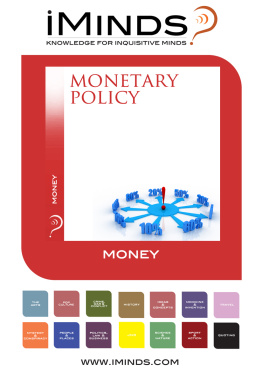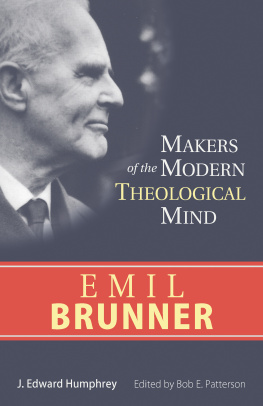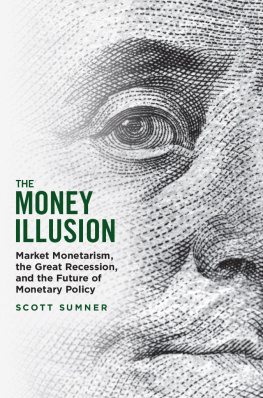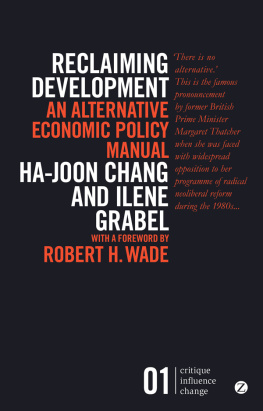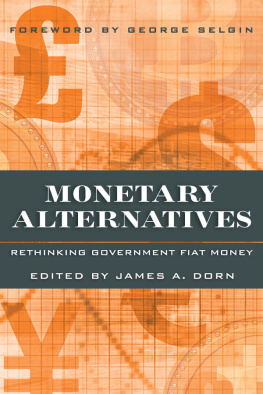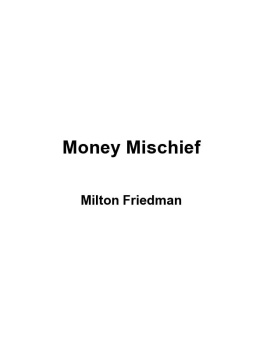Contents
List of Figures
List of Tables
Guide
Pagebreaks of the print version
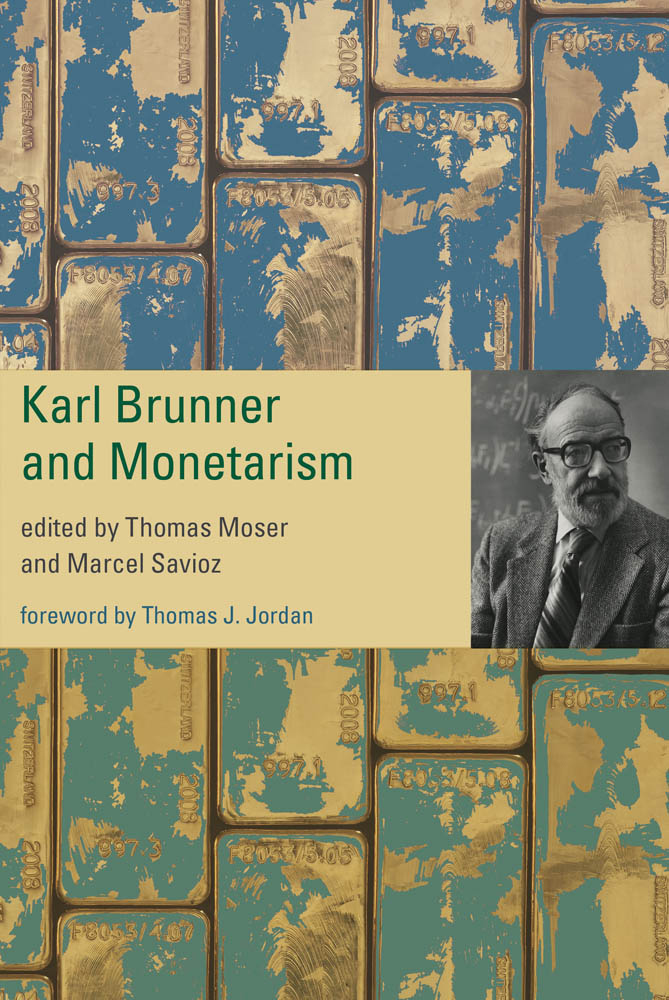
Karl Brunner and Monetarism
Edited by Thomas Moser and Marcel Savioz
Foreword by Thomas J. Jordan
The MIT Press
Cambridge, Massachusetts
London, England
2022 Massachusetts Institute of Technology
All rights reserved. No part of this book may be reproduced in any form by any electronic or mechanical means (including photocopying, recording, or information storage and retrieval) without permission in writing from the publisher.
The MIT Press would like to thank the anonymous peer reviewers who provided comments on drafts of this book. The generous work of academic experts is essential for establishing the authority and quality of our publications. We acknowledge with gratitude the contributions of these otherwise uncredited readers.
Library of Congress Cataloging-in-Publication Data
Names: Moser, Thomas, 1967 editor. | Savioz, Marcel, editor.
Title: Karl Brunner and monetarism / edited by Thomas Moser and Marcel Savioz.
Description: Cambridge, Massachusetts : The MIT Press, 2022. | Includes bibliographical references and index.
Identifiers: LCCN 2021031220 | ISBN 9780262046916 (hardcover)
Subjects: LCSH: Brunner, Karl, 19161989Political and social views. | Chicago school of economics. | Monetary policy. | Macroeconomics.
Classification: LCC HB98.3 .K37 2022 | DDC 330.15/53dc23
LC record available at https://lccn.loc.gov/2021031220
d_r0
Contents
- Thomas J. Jordan
- Thomas Moser and Marcel Savioz
- Allan H. Meltzer
- Ernst Baltensperger
- Benjamin M. Friedman
- Charles I. Plosser
- Kenneth Rogoff
- Jrgen von Hagen
- Edward Nelson
- Michael D. Bordo
- Jrgen von Hagen
- David Laidler
- Kevin D. Hoover
- Pierrick Clerc
- Pierrick Clerc and Michel De Vroey
- James Forder
- Alex Cukierman
- Juan Pablo Nicolini
- Stephen Williamson
List of Figures
World Consumer Price Index inflation percent per annum. Source: International Monetary Fund, World Economics Outlook Database, April 2016. Note: Countries are given equal weight. Lhs = left-hand side; rhs = right-hand side.
Inflation distribution. Source: International Monetary Fund, World Economic Outlook Database, April 2016. Note: Countries are given equal weight. Figures take the percentage of countries by inflation thresholds (e.g., 100% of the advanced and emerging economies are in the 0%2.5% band).
(a) top: OECDinflation-targeting versus other countries. Source: International Monetary Fund, World Economic Outlook Database, April 2016. Note: Countries are given equal weight.
(b) bottom: Emerginginflation-targeting versus other countries. Source: International Monetary Fund, World Economic Outlook Database, April 2016. Note: Countries are given equal weight.
Five-year, five-year forward inflation expectation rate. Source: Federal Reserve Bank of St. Louis.
Publics perception of trends in inflation five years ahead (%). The inflation figures reference the Harmonised Index of Consumer Prices / Consumer Prices Index as of October 2015. Sources: Bloomberg, 01.12.15, M&G YouGov Inflation Expectations Survey Q4 2015.
US consumer inflation expectations (%). Sources: Livingston Survey, Federal Reserve Bank of Philadelphia, and Cleveland Expected Inflation.
OECD long-term forecast. GDP deflator (market prices) growth (% change). Source: OECD Economic Outlook 95-Long-term Baseline Projections, 2014.
(a) top: IMF Global Aggregates: Headline Inflation. Average Consumer Price Inflation (% Change). Source: IMF World Economic Outlook (WEO), April 2016. (b) bottom: IMF Country Headline Inflation. Average Consumer Price Inflation (% Change). Source: IMF World Economic Outlook (WEO), April 2016.
Japan: distribution of inflation expectation (percentage share of the number of respondents choosing each alternative, %). Source: Bank of Japan, June 2016 survey.
Thirty-year Treasury inflation-indexed security, constant maturity. Source: Board of Governors of the Federal Reserve System.
Real interest rates: 1930s versus 2008. Source: Reinhart, Reinhart and Rogoff (2012).
Comparison of Brunner and Crouchs monetary data with later estimates. (a) Growth in the money stock. (b) Growth in the monetary base. (c) Change in the currency/deposit ratio. Note: The data displayed are in log-differences, except in the case of figure 8.1(c), which plots arithmetic first differences.
Monetary base growth and money stock growth, 19461969. Note: The growth rates are log-differences of the annual averages on the levels series reported in Capie and Webber (1985).
UK fiscal balance and monetary base growth, 19481979. Note: Monetary base growth is calculated through 1970 in the same way as in figure 8.2. From 1971, it is the log-difference of the annual average of the Bank of Englands break-adjusted M0. The fiscal balance is the annual series on the UK budget deficit formerly reported in the International Monetary Funds International Financial Statistics, expressed as a ratio to a modern series on annual UK nominal GDP obtained from the Federal Reserve Bank of St. Louiss FRED portal.
UK monetary base growth and Sterling M3 growth, 19701982. Note: For monetary base growth, see the note to figure 8.3. For 19701976, Sterling M3 growth is the log-difference in the annual average of den Butter and Fases (1981) quarterly series. This was used instead of the Capie-Webber (1985) data on Sterling M3 for this period, as the Capie-Webber series appeared to contain large breaks. For 19771982, Sterling M3 growth is the log-difference of annual averages of Capie and Webbers (1985) quarterly Sterling M3 series.
Inflation and nominal interest rates in the United Kingdom, 19611979. Note: The UK nominal Treasury bill rate is defined as the annual average of the monthly data on the UK Treasury bill rate given in the Federal Reserve Bank of St. Louiss FRED portal. The UK inflation rate is defined as the log-change in the annual average of the United Kingdoms monthly Retail Price Index in FRED. The interest rate is directly in annual percentages but, in the figure, is divided by 100 to provide rough comparability of its units with the inflation series. Nevertheless, as the inflation series is a log-change in pricesand hence is only an approximation of the actual percentage inflation ratethe figure notably understates the excess of inflation over nominal interest rates during the years of double-digit inflation.
UK manufacturing output and annual monetary base growth, monthly, 19781982. Note: Monetary base growth is obtained as the twelve-month log-difference in the break-adjusted M0 series. Manufacturing output is obtained from the Bank of Englands online Millennium of Macroeconomic Data file.
UK fiscal balance and monetary base growth, 19801999. See note to figure 8.3 for data sources.
UK nominal interest rate, nominal GDP growth, and real GDP growth, 19791992. Real GDP is obtained from FREDs annual UK series. The other data are described in the notes to figures 8.3 and 8.5. The growth rates shown are log-differences.
UK inflation and monetary base growth, 19771992. Note: See notes to figures 8.2 and 8.5 for data sources.
The AM/OM model.


